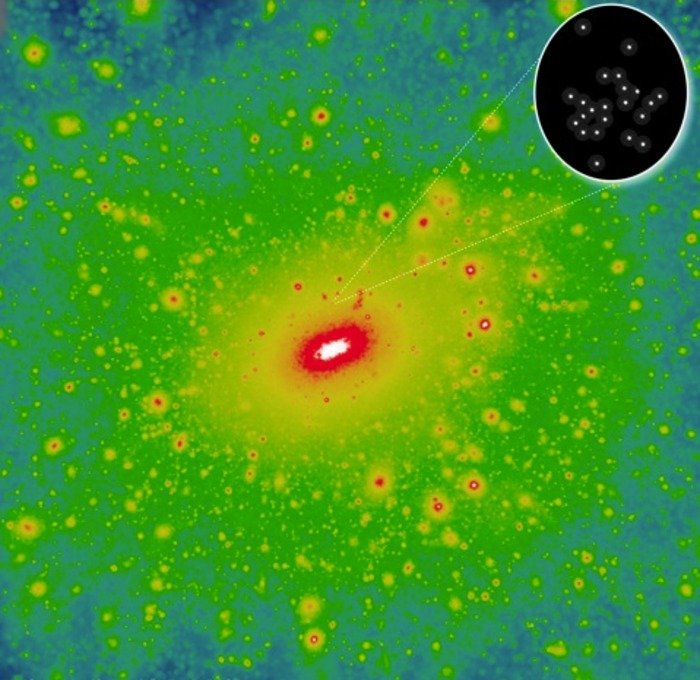Dark matter distribution within about 1 million light years of the Milky Way galaxy, expected to be swarming with thousands of small dark matter clumps called halos. Observations of the ultra-faint galaxy Segue 2 (zoomed image) have revealed that it must reside within such a tiny dark matter halo. Credit: Garrison-Kimmel, Bullock (UCI)
IRVINE, Calif., June 10 (UPI) -- U.S. astronomers say a study of the least massive galaxy in the known universe gives insights into a long-predicted but hard-to-find kind of cosmic collection.
The celestial aggregation known as Segue 2 has just 1,000 or so stars with a bit of dark matter holding them together, they said.
"Finding a galaxy as tiny as Segue 2 is like discovering an elephant smaller than a mouse," University of California, Irvine, cosmologist James Bullock said.
Astronomers have long predicted these dwarf galaxies should to be swarming around the Milky Way and have been searching for them for years.
Their inability to find any, Bullock said, "has been a major puzzle, suggesting that perhaps our theoretical understanding of structure formation in the universe was flawed in a serious way."
The discovery of Segue 2 by the Keck telescope in Hawaii -- one of the only telescopes in the world powerful enough to have made the finding -- could be "a tip-of-the-iceberg observation, with perhaps thousands more very low-mass systems orbiting just beyond our ability to detect them," he said.
Segue 2 is one of the faintest known galaxies, with light output just 900 times that of the sun, compared to the Milky Way, which shines 20 billion times brighter, the researchers said.
"It's definitely a galaxy, not a star cluster," lead study author Evan Kirby said. The stars are held together by a globule called a dark matter halo, he explained, and without this acting as galactic glue the star body wouldn't qualify as a galaxy.















